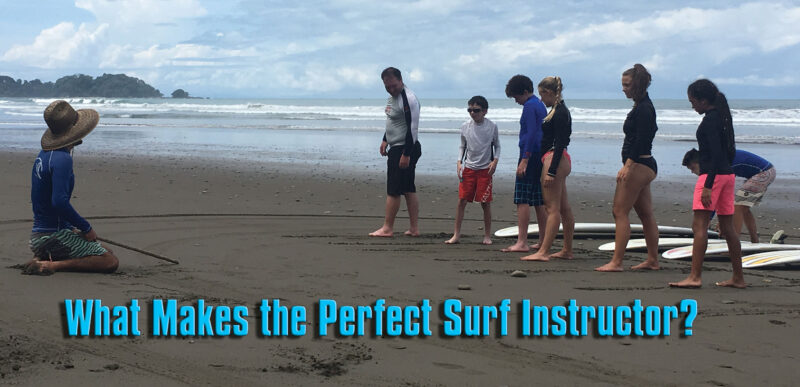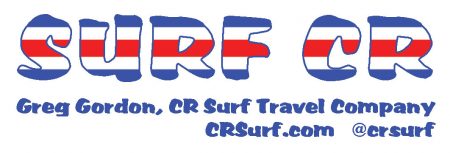What Makes the Perfect Surf Instructor?

 You see them on the beach, sitting between rows of surfboards on the beach, dark tan, with a small sign offering surf lessons. You have always wanted to learn to surf, but not sure which instructor is going to be the best for you. Well, there are some important things to consider for your safety and ability to learn.
You see them on the beach, sitting between rows of surfboards on the beach, dark tan, with a small sign offering surf lessons. You have always wanted to learn to surf, but not sure which instructor is going to be the best for you. Well, there are some important things to consider for your safety and ability to learn.
The first thing you should ask is what are their qualifications to teach. Just because they have surfed their whole life (if they are 20 years old that may be only 6 or 7 years) does not make them an instructor. In Costa Rica there is a specific certification an instructor must hold in order to give lessons, offered through the ISA (International Surfing Association). If they do not have it, they are working illegally.
Part of this course is knowing how to save someone in open waters. That can make the difference between life and death, and the rip currents in Costa Rica can be dangerous. The instructor should also know how to speak English or your native language, so he or she give clear instructions. They should give the first part of the lesson on the beach, showing you the parts of the surfboards, how to hold it when walking out to the water, how to paddle and stand up.
The second thing to check is their surfboard selection. Longer boards are much easier to learn on than short ones, unless the new rider is a child. There are soft top boards that offer some cushion, but older boards can give the learner a severe rash on the inside of their thighs when sitting on the board. Since they do not require wax, some soft top boards may become slippery after extensive use. Ideally you want a board 8 to 9 feet long, called a fun board or longboard, and they can be a little smaller if you are short or a little longer if you are heavyset.
Besides the length of the board, you want to check the board on the sides and bottom for cracks and big dents, called dings. The cracks can cut you while holding the board, and dings can affect how the board rides. If the dings were not repaired, water may enter the foam of the board, making it heavier and ride slower. The fins should be without bends or worn down (from people dragging the board in the sand) and there even soft fins that will not cut beginners if they land on them. Also check the leash, being sure there are no knots in it, and that the Velcro strap wraps snugly around your ankle. Check the string connecting the leash to the board to be sure it is not worn out. If anything is wrong with the board, ask the instructor to switch it out.
The second most important part of a surf lesson after safety is to have fun. The instructor can explain to a small group the beach part of the lesson, but once in the water they should be working with just you, or maybe one other person. They should be supportive and encouraging and keep you smiling even as you are wiping out over and over. They should know when to give you a break if you are tired, and each lesson should last about two hours so you are not so exhausted you will not want to try again the next day.
A good instructor will spark a desire to have you surfing every day for the rest of your life. They are certified, provide quality equipment, and have a great attitude towards their students. If you are looking for a surf lesson in Costa Rica, I am a surf travel expert and know incredible surf instructors around the country.
